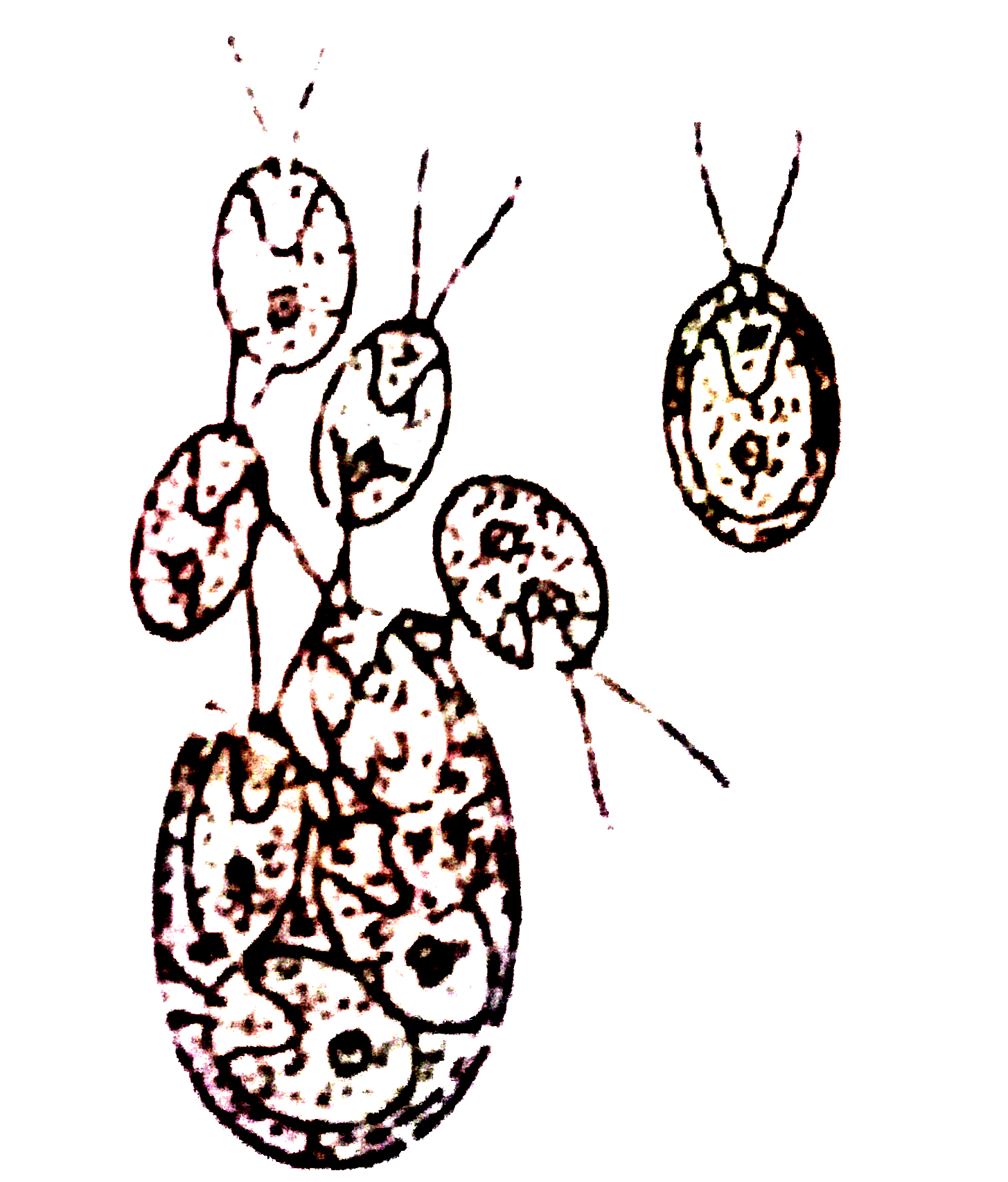In Vallisneria
The female flower reaches the surface of water by the long stalk
The female flowers are released on to the surface of water
Female flowers remain submerged in water
Pollen grains are released inside the water
The correct Answer is:1
Step-by-Step Solution:
1. Understanding Vallisneria: Vallisneria is a genus of freshwater aquatic plants commonly known as eelgrass or tapegrass. It is a submerged plant that can form extensive underwater meadows.
2. Dioecious Nature: Vallisneria is dioecious, meaning that individual plants produce either male or female flowers. This is important for understanding how reproduction occurs in this plant.
3. Female Flower Structure: The female flowers of Vallisneria are borne on long stalks that extend up to the surface of the water. This adaptation allows them to be positioned at the water's surface for effective pollination.
4. Male Flower Characteristics: Male flowers are much smaller than female flowers and are produced in large numbers. They mature underwater and eventually detach from the inflorescence.
5. Pollination Process: Once the male flowers float to the surface, they rely on water currents to disperse their pollen. The tiny male flowers act like rafts filled with pollen, which then come into contact with the female flowers at the surface, leading to pollination.
6. Evaluating the Options:
- Option 1: "The female flower reaches the surface of water by the long stalk." - This statement is true.
- Option 2: "The female flowers are released onto the surface of water." - This statement is false; it applies to male flowers.
- Option 3: "Female flowers remain submerged in water." - This statement is false; female flowers are at the surface.
- Option 4: "Pollen grains are released inside the water." - This statement is also false; pollen grains are released at the surface.
7. Conclusion: The correct answer is the first option: "The female flower reaches the surface of water by the long stalk."
- Option 1: "The female flower reaches the surface of water by the long stalk." - This statement is true.
- Option 2: "The female flowers are released onto the surface of water." - This statement is false; it applies to male flowers.
- Option 3: "Female flowers remain submerged in water." - This statement is false; female flowers are at the surface.
- Option 4: "Pollen grains are released inside the water." - This statement is also false; pollen grains are released at the surface.
Topper's Solved these Questions
- SEXUAL REPRODUCTION IN FLOWERING PLANTSBook:VMC MODULES ENGLISHChapter:SEXUAL REPRODUCTION IN FLOWERING PLANTSExercise:IMPECCABLE
Explore 60 Videos
- SEXUAL REPRODUCTION IN FLOWERING PLANTSBook:VMC MODULES ENGLISHChapter:SEXUAL REPRODUCTION IN FLOWERING PLANTSExercise:ENABLE
Explore 50 Videos
- REPRODUCTIVE HEALTHBook:VMC MODULES ENGLISHChapter:REPRODUCTIVE HEALTHExercise:Chapter Exercise-C
Explore 10 Videos
- STRATEGIES FOR ENHANCEMENT IN FOOD PRODUCTIONBook:VMC MODULES ENGLISHChapter:STRATEGIES FOR ENHANCEMENT IN FOOD PRODUCTIONExercise:IMPECCABLE
Explore 30 Videos
Similar Questions
Plant of Vallisneria is
View SolutionEichhornia and Vallisneria are common in having
View SolutionEichhornia and Vallisneria are common in having
View SolutionHow do the pollen grains of Vallisneria protect themselves?
View SolutionThe male flowers of Vallisneria float on the surface of water with the help of
View SolutionWhy do the pollen grains of Vallisneria have a mucilaginous covering ?

View SolutionHow many plants in the given below are pollinated by water ?
Vallisneria , Zostera , water hyacinth , water lily , coconut , yucca , Hydria , Ficus
View SolutionHow many plants in the list given below are wind - pollinated plants ?
Coconut , Vallisneria , Ophrys, Amorphophallus, Commelina, bamboo, wheat , rice , Yucca.
View SolutionHow many plants in the list given below are insect - pollinated plants ?
Sunflower , Coconut , water lily, water hyacinth , Vallisneria , Ophrys , papaya , cotton , Banana, Adansonia , Bombax ,Bamboo , wheat , Hydrilla .
View SolutionThe vegetative propagules in aquatic plants like Vallisneria and Eichhornia are
View Solution